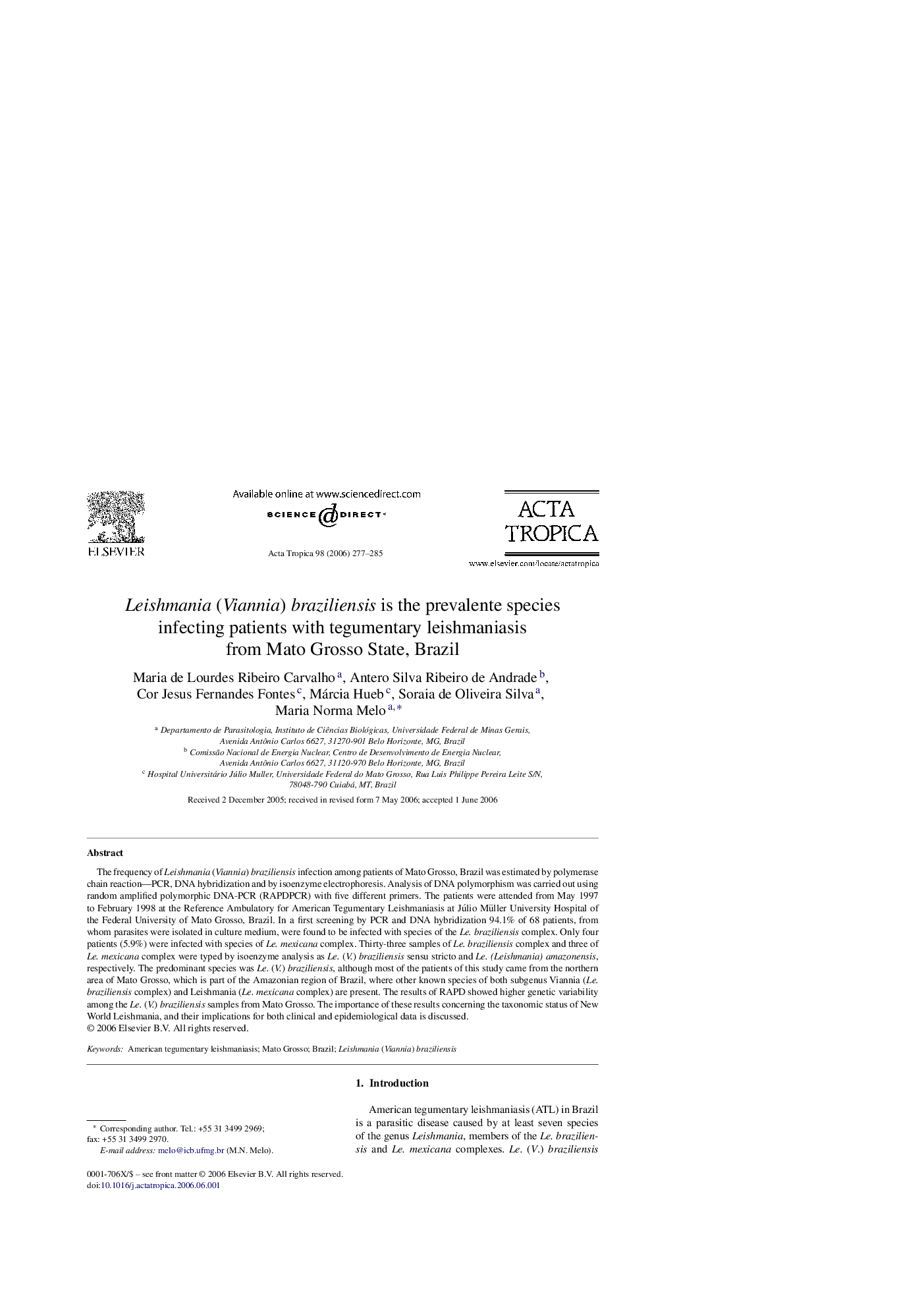| Article ID | Journal | Published Year | Pages | File Type |
|---|---|---|---|---|
| 3394706 | Acta Tropica | 2006 | 9 Pages |
The frequency of Leishmania (Viannia) braziliensis infection among patients of Mato Grosso, Brazil was estimated by polymerase chain reaction—PCR, DNA hybridization and by isoenzyme electrophoresis. Analysis of DNA polymorphism was carried out using random amplified polymorphic DNA-PCR (RAPDPCR) with five different primers. The patients were attended from May 1997 to February 1998 at the Reference Ambulatory for American Tegumentary Leishmaniasis at Júlio Müller University Hospital of the Federal University of Mato Grosso, Brazil. In a first screening by PCR and DNA hybridization 94.1% of 68 patients, from whom parasites were isolated in culture medium, were found to be infected with species of the Le. braziliensis complex. Only four patients (5.9%) were infected with species of Le. mexicana complex. Thirty-three samples of Le. braziliensis complex and three of Le. mexicana complex were typed by isoenzyme analysis as Le. (V.) braziliensis sensu stricto and Le. (Leishmania) amazonensis, respectively. The predominant species was Le. (V.) braziliensis, although most of the patients of this study came from the northern area of Mato Grosso, which is part of the Amazonian region of Brazil, where other known species of both subgenus Viannia (Le. braziliensis complex) and Leishmania (Le. mexicana complex) are present. The results of RAPD showed higher genetic variability among the Le. (V.) braziliensis samples from Mato Grosso. The importance of these results concerning the taxonomic status of New World Leishmania, and their implications for both clinical and epidemiological data is discussed.
